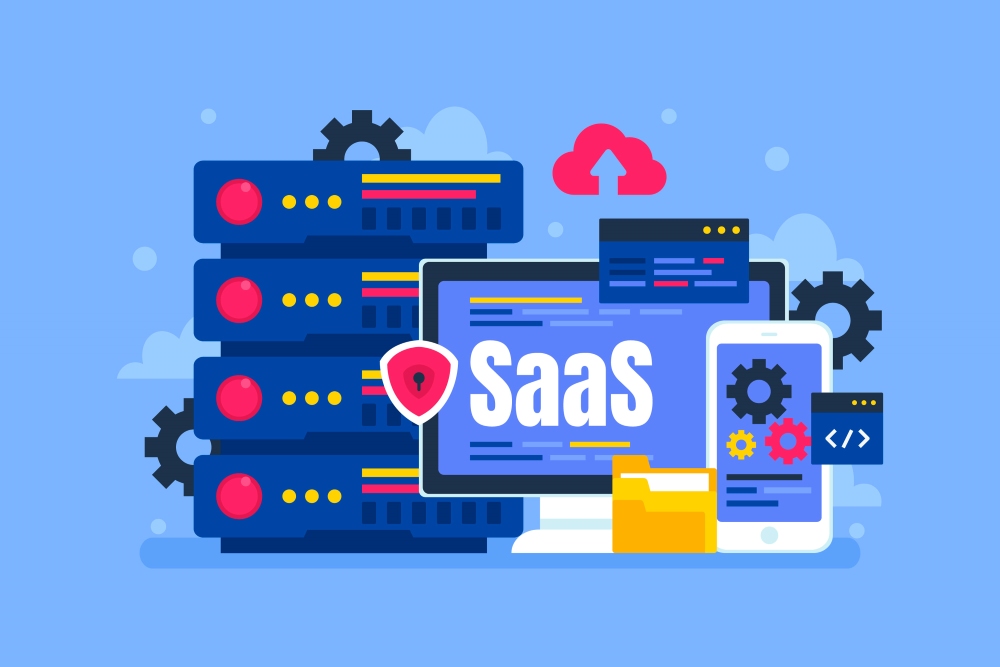Data Security and Compliance in SaaS Applications: Best Practices
In the world of SaaS apps, data security and compliance are critical. It’s not only about protecting data; it’s also about preserving trust and integrity.
Businesses may prevent unwanted access to sensitive information by using effective encryption mechanisms, access restrictions, and frequent audits.
Employee training and awareness are also important for strengthening defenses against possible threats. Furthermore, continual monitoring and secure development techniques improve security measures.
Prioritizing data privacy transparency and developing a well-defined incident response strategy are critical components of a holistic approach to data security and compliance in SaaS services.
Here, we delve into best practices and strategies for maintaining data integrity and meeting compliance standards in the realm of SaaS.
1# Encryption
Encryption plays a pivotal role in safeguarding data integrity within SaaS applications. By implementing robust encryption protocols, sensitive information is shielded both during transmission and while at rest, thwarting any unauthorized access attempts.
This ensures that crucial data, such as customer details or proprietary information, remains secure and confidential, mitigating the risk of data breaches or unauthorized disclosures.
Employing encryption not only provides peace of mind to businesses and their clients but also demonstrates a commitment to maintaining data integrity and upholding privacy standards.
Robust encryption measures are crucial for comprehensive data security strategies in SaaS applications, as data breaches are a significant threat in today’s digital landscape.
2# Access Controls
Access controls are critical for maintaining the security and integrity of data within SaaS applications.
By employing robust authentication methods like multi-factor authentication (MFA) and role-based access controls (RBAC), access to sensitive information is restricted to authorized personnel exclusively.
Multi-factor authentication adds an additional layer of security by requiring users to provide multiple forms of verification before accessing the system, effectively thwarting unauthorized access attempts.
Similarly, role-based access controls ensure that users are granted permissions based on their roles and responsibilities within the organization, minimizing the risk of data breaches or misuse.
By implementing stringent access controls, businesses can fortify their defenses against potential security threats and uphold the confidentiality and integrity of their data assets.
These measures not only safeguard sensitive information but also instill confidence among users and stakeholders in the security of the SaaS application.
3# Regular Audits and Assessments
Regular audits and assessments are essential components of maintaining robust data security and compliance in SaaS applications.
By conducting frequent security audits and assessments, organizations can proactively identify and address potential vulnerabilities and security gaps before they can be exploited by malicious actors.
These audits help ensure that the SaaS application remains compliant with industry regulations and standards, such as GDPR, HIPAA, and PCI DSS, which are designed to protect sensitive data and ensure privacy and security.
Regular assessments also provide valuable insights into the effectiveness of existing security measures and help organizations continuously improve their security posture.
By staying vigilant and proactive through regular audits and assessments, businesses can enhance their overall security posture, mitigate risks, and safeguard sensitive data against potential threats and breaches.
4# Data Backup and Recovery
Data backup and recovery are critical aspects of data security and compliance in SaaS applications.
Implementing automated data backup procedures ensures regular backup and secure storage of important data, minimizing the risk of data loss from system failures, human error, or cyberattacks.
Regularly testing data recovery processes is equally important to verify their effectiveness and ensure that organizations can quickly and efficiently recover data in the event of a disaster or security incident.
By having robust data backup and recovery mechanisms in place, businesses can enhance their resilience to disruptions and maintain data availability, integrity, and confidentiality.
This not only helps organizations comply with regulatory requirements but also ensures business continuity and minimizes the impact of potential data breaches or incidents on operations and reputation.
5# Employee Training and Awareness
Employee training and awareness play a crucial role in ensuring data security and compliance in SaaS applications.
By providing comprehensive security training to employees, organizations can educate them about various cybersecurity threats, including phishing attacks and social engineering tactics.
This empowers employees to recognize suspicious activities and potential security incidents, allowing them to take appropriate actions to mitigate risks and safeguard sensitive data.
Additionally, raising awareness among employees about their roles and responsibilities in maintaining data security helps foster a culture of cybersecurity within the organization.
Regular training sessions, simulated phishing exercises, and ongoing communication about security best practices can help reinforce the importance of data protection and ensure that employees remain vigilant against evolving threats.
Ultimately, well-trained and security-aware employees are valuable assets in defending against cyber threats and maintaining compliance with regulatory requirements.
6# Vendor Due Diligence
Vendor due diligence is essential to maintaining data security and compliance in SaaS applications. When selecting SaaS vendors, organizations should conduct thorough assessments of their security measures, compliance certifications, and track records in data protection.
This includes reviewing the vendor’s security protocols, encryption standards, and data handling processes to ensure they align with industry best practices and regulatory requirements.
Additionally, organizations should inquire about the vendor’s compliance certifications, such as SOC 2 or ISO 27001, to verify their commitment to data security and regulatory compliance. Assessing the vendor’s track record in data protection, including any past security incidents or breaches, can provide valuable insights into their reliability and trustworthiness.
By conducting comprehensive due diligence on SaaS vendors, organizations can mitigate potential risks, protect sensitive data, and ensure compliance with regulatory mandates.
7# Incident Response Plan
An incident response plan is crucial for effectively managing security breaches or data breaches in SaaS applications. Organizations should develop and regularly update a comprehensive plan that outlines procedures for detecting, responding to, and recovering from such incidents.
This includes establishing protocols for incident detection, notification, containment, eradication, and recovery to minimize the impact on operations and reputation.
The incident response plan should also define roles and responsibilities for key personnel, establish communication channels for reporting and escalating incidents, and outline steps for post-incident analysis and improvement.
By having a well-defined incident response plan in place, organizations can efficiently address security incidents, mitigate potential damages, and maintain trust and credibility with customers and stakeholders.
8# Continuous Monitoring
Continuous monitoring is essential for maintaining the security and compliance of SaaS applications.
By implementing robust monitoring tools and systems, organizations can continuously track and analyze activities within their SaaS infrastructure to identify potential security threats or unauthorized access.
This proactive approach enables organizations to detect suspicious behavior or security incidents in real-time, allowing for immediate response and remediation.
Continuous monitoring also helps organizations stay vigilant against emerging threats and vulnerabilities, ensuring that their SaaS environments remain secure and resilient.
Organizations that incorporate continuous monitoring into their security strategy may successfully preserve sensitive data, prevent against cyber attacks, and ensure compliance with industry norms and standards.
9# Secure Development Practices
Secure development practices are crucial for ensuring the security and integrity of SaaS applications. By adhering to secure coding practices, organizations can minimize the risk of introducing vulnerabilities into their application code.
This involves following established coding standards and guidelines, such as input validation, output encoding, and proper error handling, to prevent common security issues like injection attacks and cross-site scripting (XSS).
Additionally, conducting regular security reviews of SaaS application code allows organizations to identify and remediate potential vulnerabilities before they can be exploited by malicious actors.
By proactively addressing security weaknesses in the development phase, organizations can significantly reduce the likelihood of security breaches and protect sensitive data from unauthorized access or manipulation.
Secure development practices play a critical role in building trust with users and ensuring the long-term security and reliability of SaaS applications.
10# Data Privacy Transparency
Data privacy transparency is essential for building trust with users and ensuring compliance with data protection regulations.
By maintaining transparency regarding data privacy practices, organizations can demonstrate their commitment to protecting users’ personal information.
This involves clearly communicating how data is collected, processed, and stored, as well as providing users with mechanisms to exercise their rights regarding their personal data.
For example, organizations should provide users with options to access, modify, or delete their data, as required by regulations such as the General Data Protection Regulation (GDPR) and the California Consumer Privacy Act (CCPA).
By empowering users to control their personal information, organizations can foster trust and confidence in their data privacy practices, ultimately enhancing their reputation and mitigating the risk of regulatory fines or penalties for non-compliance.
Conclusion
To summarize, addressing data security and compliance in SaaS services is critical for protecting sensitive information and ensuring regulatory compliance.
Organizations may decrease security risks and develop trust with users by implementing best practices such as encryption, access restrictions, frequent audits, and staff training, resulting in long-term success and resilience in today’s digital ecosystem.




